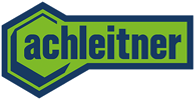Dog and human save lives
The Mountain Rescue Tyrol dog team has a wide range of tasks that demand a lot from both the dog and the dog handler. The teams are trained in a multi-stage training programme lasting at least three years to search for buried persons and to search for missing persons in inaccessible alpine terrain.
More and more electronic aids are being used to search for buried victims and missing persons in winter sports, which make it possible to locate them quickly and accurately. However, if one of these devices does not work or is not carried by the athlete, the trained search dog is often the only means of searching large areas in avalanches or open terrain efficiently and without the need for a lot of manpower.
SENSE OF SMELL OF THE HIGHEST QUALITY
Dogs smell about a million times better than humans. Compared to us, they have 40 times more brain cells associated with the sense of smell. The information that a dog derives from an odour is transmitted directly to the emotional centre in the brain.
Smelling for dogs is like feeling for humans. This special sense of smell depends on the humidity, the air temperature and the intensity of the odour, for example from a buried person. Their odour, in turn, is directly related to the duration and depth of
the burial. The odour is directly related to the duration and depth of the burial, the snow conditions, the wind speed and the wind direction. The dog’s olfactory sensor works like a scanner that can also spatially categorise the information it receives from the odours.
The avalanche dog’s “scent database” is constantly fed with new information during the search. As a result, it can easily distinguish between people probing the avalanche and a person who is buried.
The avalanche dog is conditioned and trained to sniff out the person who is buried.
HIGH DEMAND = HIGH EFFICIENCY
Training to become a dog handler with a search dog is demanding and time-consuming. A dog handler must be an active member of the mountain rescue organisation. This requires private mountaineering activity and good physical condition. The dog handler, like every other mountain rescuer, also carries out their work free of charge and on a voluntary basis.
A search dog does not have to be a purebred. He or she should be of medium size and not too heavy for operating in alpine terrain. Such a dog is always also a family dog. Mountain rescue dogs are not fearful, very curious and trusting, they have a balanced and friendly nature. Of course, all search dogs must also be able to fly.
The well-rehearsed team of man and dog is very familiar with the terrain and mountains and with alpine dangers. Each search dog is owned by the mountain rescuer itself. They are responsible for feeding, care, vaccination, insurance and training.
THE PATH TO BECOME A DOG HANDLER
Anyone who wants to become a dog handler must first complete the entire training programme to become a mountain rescuer. As an active member of the local branch, prospective dog handlers and their animals are tested for their suitability and familiarised with basic tasks. The actual training then takes place supra-regionally with other candidates in compulsory courses, which are divided into winter and summer work.
The training takes place in theory and practice. This includes meteorology, avalanche awareness and figurant training as well as first aid and practical exercises in the terrain.
Course A - Basic training
The basic school comprises five modules. The aim is to strengthen the good social bond between handler and dog. The search dog learns to react correctly and calmly to disturbing influences.
During training, the natural pack instinct of all dogs is utilised by the training teams and dog handlers. At the beginning, the young dog has to search for its handler who has disappeared in the snow.
The young dog is restrained and easily panics when his trusted carer disappears in the snow. In the wild with wolves, the ancestors of dogs, life in a pack is the basis of survival. This drive towards other animals, towards being on the move together and towards the dog handler is the actual basis and motivation for the young mountain rescue dog to later “professionally” search for people. It is playfully encouraged and reinforced in various levels of development and difficulty.
Course B - Advanced training
After the basic course in winter, there is training in summer for searching for missing persons, the so-called summer and area search Course B with tactical training for dog handlers does not begin until the following winter. During exercises, searches are carried out on real avalanches where there are several strangers and strange dogs. A good search dog must not let this stop him from working. hat’s more, figurants (trainees as buried victims) are buried deeper, up to one and a half metres.
Topics: Correct assessment of situations, appropriate use of the dog, probing and immediate life-saving measures for buried victims who have been brought to light.
Course C - Perfection course and Course CW - Advanced and further training
NAfter completing the B course, a search dog is officially ready for operation. However, every search dog team still has to complete perfection and further training courses in order to meet the high demands of rescue operations.





